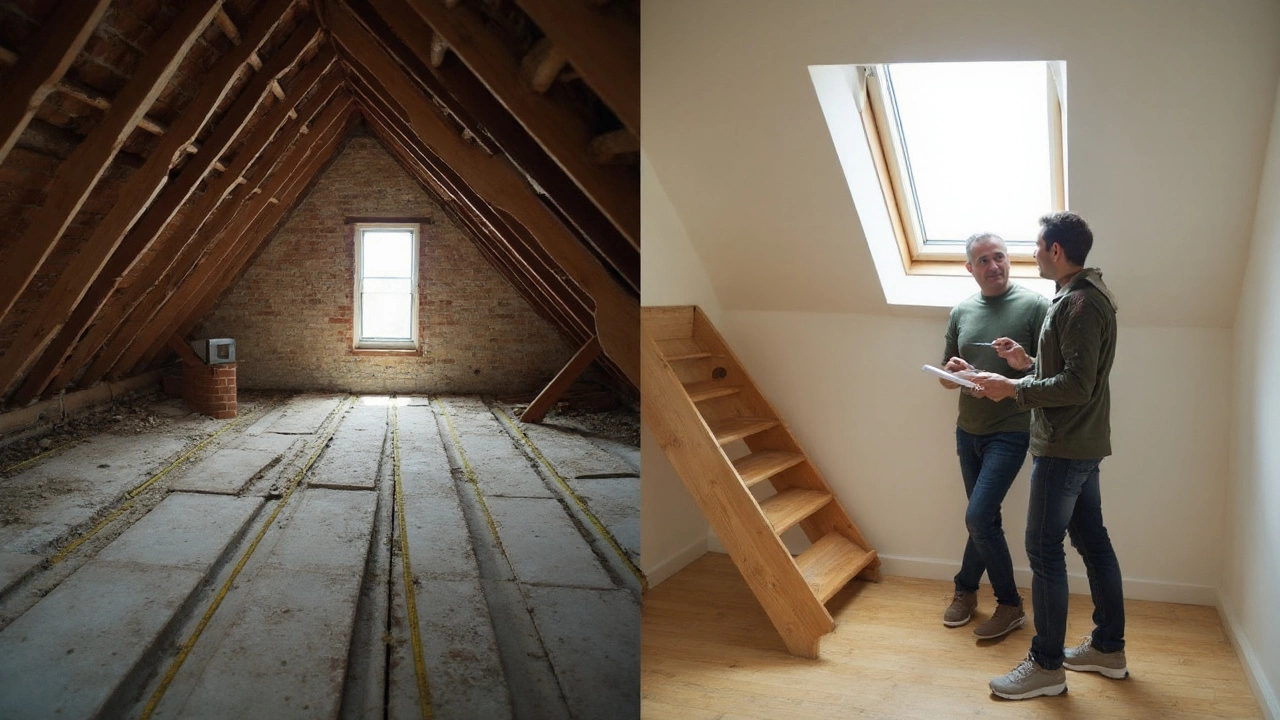See 2025 NZ loft conversion costs: typical prices, per‑m² rates, what drives the budget, and how to plan, consent, and avoid surprises. Clear ranges and examples.
Average Cost of Loft Conversion – What UK Homeowners Really Pay
If you’re looking at turning your attic into a bedroom, office, or playroom, the first thing on your mind is the price tag. In 2025 most UK homeowners spend between £15,000 and £45,000 for a standard loft conversion. The exact number depends on size, design, and the amount of work needed to make the space liveable.
Key Cost Drivers
Size is the biggest factor. A 30‑square‑metre loft will cost roughly £30,000, while a larger 50‑square‑metre space can push the total past £50,000. The type of conversion matters too. Simple Velux window installations are cheaper than full‑profile dormer builds, which add roof structure, extra bricks, and more labour.
Structural work adds another layer of expense. If you need to reinforce joists, add steel beams, or install a new staircase, expect an extra £5,000‑£10,000. Planning permission and building control fees are small compared with construction costs, but they can add £500‑£1,500 if your project falls outside permitted development rules.
Services like electrical wiring, plumbing, and heating are often overlooked. Adding a radiator, new lighting, or extending plumbing to a bathroom can easily add £2,000‑£5,000. Finally, interior finishes – plasterboard, flooring, doors, and decoration – can range from budget to high‑end, shifting the total by another £3,000‑£8,000.
Budgeting Tips to Keep Costs in Check
Start with a clear brief. Sketch the layout you want, note the number of windows, and decide on any extra rooms. A well‑defined plan helps contractors give accurate quotes and reduces change‑order surprises.
Get at least three written quotes. Compare not only the overall price but also how each company breaks down labour, materials, and contingencies. The cheapest quote may hide hidden fees, while the most expensive might include unnecessary upgrades.
Allow for a 10‑15% contingency. Even with a solid plan, unforeseen issues like outdated wiring or damp can pop up once the roof is opened. Having a buffer prevents you from scrambling for extra cash mid‑project.
Consider doing some work yourself. Tasks like painting, fitting flooring, or installing pre‑wired lighting can save a few thousand pounds if you’re comfortable with DIY. Just make sure any DIY work complies with building regulations – you don’t want to void insurance later.
Check financing options early. Some lenders offer “home improvement loans” with lower interest rates than credit cards. If you’re happy to spread cost over a few years, a low‑rate loan can lighten the monthly outlay.
Lastly, think about future value. A well‑executed loft conversion often raises a property's resale price by 5‑10%. Even if you’re not planning to sell soon, the added space can improve your quality of life and might pay off later.
In short, a typical loft conversion in the UK sits between £15,000 and £45,000, with size, design, and services driving the final number. By planning ahead, getting multiple quotes, and keeping a contingency fund, you can avoid nasty surprises and enjoy a new, functional space without breaking the bank.
